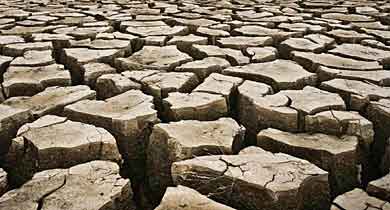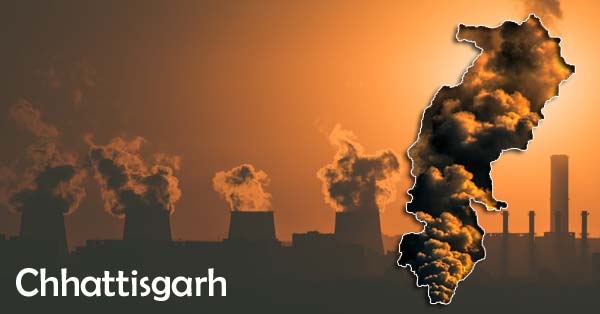Chhattisgarh faces agricultural crisis
Raipur | Correspondent: Shortfall of rains in the Chhattisgarh state has placed fate of farmers in several districts at risk.
Farmers who had sown their seeds have unwillingly stopped due to the dry conditions.
There has been no rain, and with the bright sunshine, the ground is completely devoid of moisture, which is affecting the crops.
During this period, farmers have two options including setting up a nursery, known as replanting, or direct sowing of seeds. The work of transplantation has been significantly delayed. Even if it rains now and the fields receive water, the replanting will still be delayed.
While for those who have been practicing direct sowing of seeds, the situation is dire. If the seeds have been sown, they are either drying up after germination or are likely to dry up soon.
The time for sowing seeds has passed leaving only transplantation as an option. Without significant rainfalls in the near future, Chhattisgarh might face a 20 to 30 percent reduction in its yield.
Reports indicate that lack of rainfalls within the state has further led farmers to rely on the ground water which is also nearly depleting. The farmers most impacted by these conditions are those without their own irrigation systems, a group that is substantial in the state.
Additionally, even irrigated lands are not receiving any water, preventing the release of water from dams and making farming activities impossible.
Significant damage has already occurred, with a 20-30 percent deficit already experienced. If there is no further rainfall, the damage will continue to increase.
Situation similar to 1966-67 famine
Farmer leader Nand Kashyap hailing from Bilaspur district says if there is no continuous rainfall after July 15, the conditions within the state could get intense.
Historically, we are witnessing a repetition of the drought that occurred in 1966-67.

During that time, the rains were delayed and subsequently diminished. It was a particularly harsh period.
Although, since then, amenities such as pumps and electricity have become more accessible, these advancements will be of little use if the rain does not come.
Factors Contributing to the Current Situation
Deforestation and local pollution, including the burning of coal which releases harmful gasses like carbon dioxide, carbon monoxide, and nitrogen oxide, are contributing factors. The condensed clouds arriving at the central belt of Chhattisgarh stop short and instead drift towards the western Himalayas, potentially exacerbating conditions that lead to landslides.

The Hasdeo forests, often regarded as the lungs of Chhattisgarh, are currently being deforested, significantly impacting the state. We have observed erratic rainfall patterns within cities, where one area receives rainfall while another does not, says farmer Anand Mishra from Mungeli.
Present condition in Chhattisgarh
The districts including Sarangarh and Raigarh are facing severe water scarcity issues this season. With rainfall falling short by 40 mm compared to the average of the last ten years, concerns are growing among farmers about the delayed onset of the monsoon and its impact on crop cultivation.
Only 21% of the sowing target has been achieved due to inadequate rainfall, affecting over 1,88,750 hectares of paddy and pulses.
With substantial rainfall over three consecutive days in the Sarguja division, farmers appear hopeful.
According to the latest figures from the Meteorological Department, Chhattisgarh has experienced an average rainfall deficit of 29% so far this season.
Among the districts, Bemetara is facing the most severe condition, with 20 districts receiving below-average rainfall and 12 districts experiencing normal rainfall.
These statistics cover the period from June 1 to July 12.
Agriculture department report
According to the Agriculture Department’s report, 23.01 lakh hectares have been sown so far, which is 47 percent of this season’s goal.
The target for Kharif crops this season is 48.63 lakh hectares.
Water levels in the dams between last year and this year
The water levels in dams across Chhattisgarh have shown significant variations between the years 2023 and 2024.
According to recent data, the Gangrel dam recorded a substantial decrease from 51.18 million cubic meters last year to 4.91 million cubic meters this year.
Similarly, the Minimata Bango dam also saw a decrease from 69.13 million cubic meters to 44.39 million cubic meters. The Tandula-Balod dam had 59 million cubic meters last year, whereas this year it stands at 5.05 million cubic meters.
Other notable decreases include Dudhawa dam (65.8 to 13.67 million cubic meters), Sikasar dam (60.94 to 24.84 million cubic meters), and Kharang dam (75.33 to 60.17 million cubic meters).




